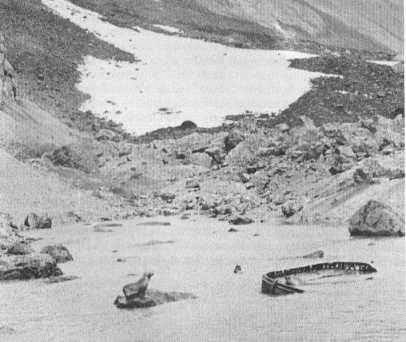
Modern replica of a Viking ship. Source
The Viking sunstone has been mentioned in various Icelandic texts throughout the 13th-15th centuries. It is said to have assisted Vikings in navigation when the sun was below the horizon or covered during an overcast day. One of the texts is the “Rauðúlfs þáttr“, it specifically mentions an account where the sunstone was used to locate the sun in overcast skies. Here is a translation of part of the text (Source):
“The weather was thick and snowy as Sigurður had predicted. Then the king summoned Sigurður and Dagur (Rauðúlfur’s sons) to him. The king made people look out and they could nowhere see a clear sky. Then he asked Sigurður to tell where the sun was at that time. He gave a clear assertion. Then the king made them fetch the solar stone and held it up and saw where light radiated from the stone and thus directly verified Sigurður’ s prediction”
Recently, a crystal was discovered in an Elizabethan ship wreck, and is believed to be an original sunstone artifact. Chemical analysis has shown that the artifact is made from calcite; in the past, it has been suggested that this could possibly have been the mineral that the Viking sunstones were made from. The reason for this is that calcite has an optical property called ‘birefringence’. This means that the speed at which light travels through the mineral varies depending on the polarization and propagation direction of the incident light rays.
To explain this in more detail I will use an analogy. Imagine you are pushing a pram along a footpath (light travelling through air), to the right of the footpath there is a lot of sand (a material other than air, in this case calcite). If the right hand wheels of the pram were to go in to the sand, the pram would be pulled in the direction of the sand because the pram travels slower in sand. When this happens with light going from air to another material such as water or glass, it is called diffraction. The difference with calcite is that that change in speed depends on the angle that the light enters the crystal and also the polarization of the light waves.

This image shows how light rays polarized in different orientations diffract by different amounts. This is what causes the doubling effect seen in the picture above.
So what does this have to do with calcite being the sunstone? If you were to hold a calcite crystal up to the horizon and rotate around, you would see the doubling effect occur at different angles from the sun due to the change in polarization of light entering the atmosphere. If you were facing the direction of the sun, the double image would begin to line up as the light would be all polarized in the same direction. This would allow you to know which direction you are travelling and therefore whether you were on the right path or not.
The sunstone had been thought of as just a legend for quite some time, but the recent discovery mentioned above adds much credibility to the mentions of this fascinating object in historical texts.







You must be logged in to post a comment.